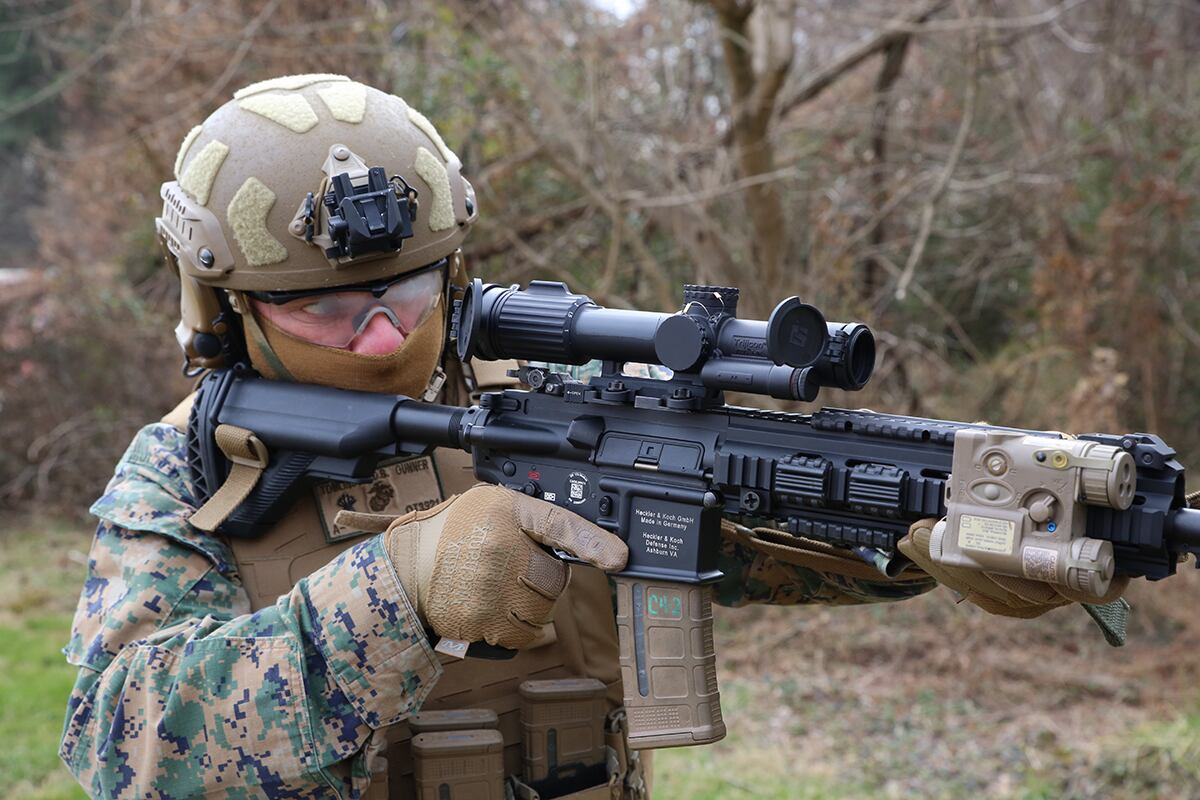The core infantry gear upgrades are nearly complete across the force and new night vision, a high-cut helmet, new tropical uniforms and boots are soon to follow.
That’s according to a recent update provided to media by Brig. Gen. A.J. Pasagian, head of Marine Corps Systems Command, on Thursday.
Officials see the new kit, which does everything from improving shooter accuracy, night vision to body armor protection, vehicle mobility and basic comfort, as more than simply giving grunts better gear.
RELATED

As the Corps restructures itself for a new kind of warfare, small teams separated on distant beachheads to thwart an adversary’s Navy, it is experimenting and war gaming both in exercises and simulations, the best way to meet those challenges.
Pasagian said that his command will be working closely with each of the three battalions, one per active duty division, as they experiment with new concepts and tactics.
The Corps is also upgrading its ranges at places such at Twentynine Palms, California, to better collect data on how Marines are performing in the field.
Combining that data with new gear can show its effectiveness in making Marines more lethal and survivable.
“I can then present that to the new Marine Corps Wargaming Center for analysis,” he said.
That means that planners can take data from the squad level up, aggregate the results and measure performance of actual Marines in field scenarios, rather than just statistical representations of how Marine might behave in a war game.
The Marines are nearly finished fielding the squad binocular night vision goggle. It is a separate effort from the Army’s enhanced Night Vision Goggle-Binocular.
Both devices are binocular, providing real depth perception not previously available with monocular devices. The SBNVG was pursued by the Marine starting in 2018 to field that capability to the fleet faster. Though Pasagian noted that the Marines are monitoring the Army ENVG-B work, which began fielding in 2019.
The SBNVG has an external thermal clip. The ENVG-B has those features built into the device and also can work on a network to share data and provide a common operational picture.
The new Marine Corps tropical uniform has concluded its testing and begun shipments to units. That will go to units in those climates, primarily the U.S. Indo-Pacific Command.
A new tropical boot for the same Marines is expected to be fully fielded by 2022.
The command continues to work on a high-cut version of the enhanced combat helmet, or ECH, which is already in use by troops with U.S. Special Operations Command. The higher cut allows for the use of networked communications and hearing protection devices.
Officials also expect the ultra light tactical vehicle fleet to be fielded by late 2022, Pasagian said.
“That’s really a tremendous utility vehicle that allows you to conduct all sorts of mission role variations, whether logistics carrying ammo, heavy class four stuff, concertina wire,” he said. “We’re also kitting it out with really advanced data networks and data routers.”
The vehicle would replace the existing Polaris MRZR all-terrain tactical vehicle but have similar characteristics.
Shooters are now seeing new optics arriving at their units. The Corps announced fielding of the squad common optic in February. It will replace the existing rifle combat optic.
The SCO is a magnified day optic that has both an illuminated and nonilluminated aim point that’s built to increase effective target acquisition and probability of hit, according to a Marine statement.
The new scope weighs 31.5 ounces and is 10.5 inches long ― making it nearly double the size of the nearly 6-inch and 10 ounce RCO.
But with that size Marines are able to double their magnification, from the current four times magnification of the RCO to eight times with the SCO.
The Marines have also fielded a Generation III Plate Carrier for body armor. The new design offers fragmentation, projectile and rifle round protection with better fit and function, the one-star said.
Todd South has written about crime, courts, government and the military for multiple publications since 2004 and was named a 2014 Pulitzer finalist for a co-written project on witness intimidation. Todd is a Marine veteran of the Iraq War.




